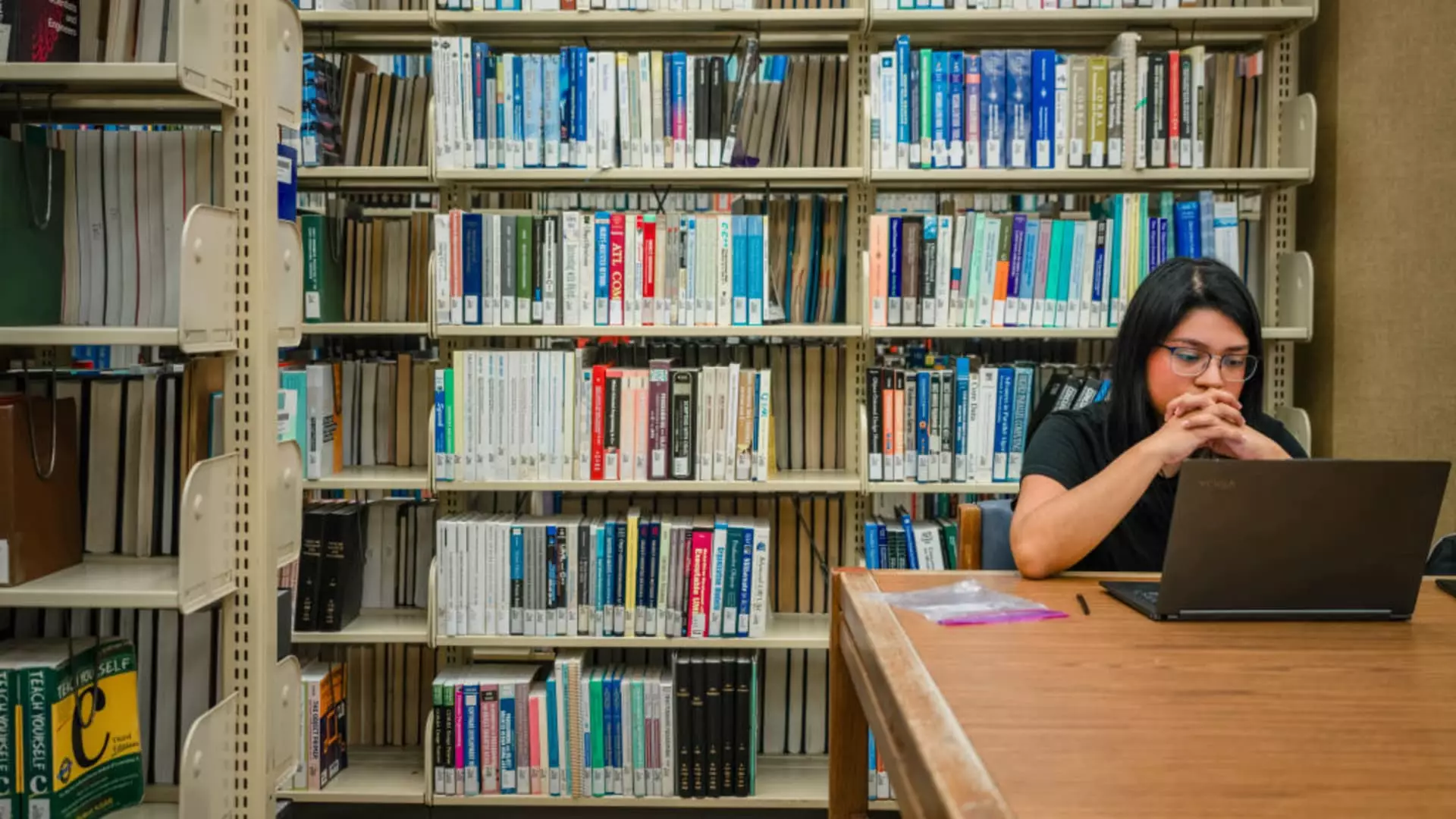The recent legislative overhaul introduced by President Donald Trump’s administration marks a startling departure from the era of expanding educational access. While proponents tout these changes as fiscal discipline or a necessary correction to a historically overindulgent system, they mask a disturbing reality: a calculated retreat from affordability and opportunity in higher education. As a center-wing liberal, I view this move not as prudent, but as a step toward exacerbating inequality and limiting social mobility. Imposing rigid borrowing caps on students effectively narrows their options, making it harder for low- and middle-income students to access graduate and professional degrees that could elevate their economic prospects.
The introduction of a lifetime borrowing limit of $257,500 signifies a stark contextual shift. While on the surface it appears to promote fiscal responsibility, in truth it risks creating a ceiling on opportunity itself. For many students—particularly those pursuing medicine, law, or dentistry—this cap could mean a forced confrontation with the brutal reality of unaffordable education. The decision to limit graduate and professional school loans to $20,500 annually and total limits around $200,000 essentially channels these students into a more precarious financing environment, where borrowing more from private sources becomes inevitable. This shift bears anti-egalitarian implications; it privileges wealthier students and families, who can better navigate or bear the costs, over those needing the most support.
Impacts on Future Professionals and Healthcare
The tangible consequences of these constraints are particularly acute in critical sectors like healthcare and law—fields that are vital to societal well-being. According to experts, over half of dental students and nearly a third of med students carry debts exceeding the new permissible limits, which may alter their career paths or deter prospective students altogether. Such restrictions threaten to intensify the pre-existing shortages in essential professions. The healthcare system in the United States cannot afford to marginalize a generation of aspiring doctors and dentists because of financial barriers that could have been mitigated by fairer, more inclusive federal support.
By capping borrowing for professional degrees, the legislation risks producing a future where the most talented and motivated students—those who could potentially serve underserved communities—are pushed away from medicine, dentistry, or law, or are forced into overwhelming debt from private lenders with less borrower protections. We should be striving for an increasing number of diverse professionals, not a constraining of their educational options based on arbitrary fiscal limits.
The Broader Economic and Social Ramifications
The decision to impose borrowing ceilings also tangentially touches on the sustainability of our entire higher education ecosystem. Tuition costs have escalated rapidly over the past few decades, far outpacing inflation and household income growth. For years, students have been lulled into a false belief that debt was a manageable investment—and, in some cases, it was. However, the rising tide of student debt now exceeds $1.7 trillion, creating a burden that stifles economic growth, dampens consumer spending, and entraps young professionals in a cycle of financial strain.
Introducing limits on federal loans could inadvertently force high-cost colleges to lower tuition or increase aid, which is a positive signal. Yet, it also shifts the majority of the financial burden onto private lenders or the students themselves, particularly those from low-income backgrounds who are least equipped to handle such hefty debt. Unlike federal loans, private lending depends heavily on creditworthiness, excluding many who could have otherwise pursued advanced degrees with reasonable assistance. This policy risk widens the inequality gap — where wealthier, privileged students continue to get a shot at elite careers, while their less privileged peers are pushed to the margins.
The move exemplifies a shortsighted approach, prioritizing immediate fiscal metrics over the long-term societal good. Rather than confronting the root causes of soaring tuition and student debt, these borrowing caps merely shift the problem, constraining opportunity and deepening structural inequities. It reduces the likelihood that higher education remains a ladder for social mobility, instead transforming it into a privilege reserved for those with existing economic advantages.
A Question of Fairness and Opportunity
From a center-left perspective, the core issue isn’t just about numbers or balanced budgets; it’s about fairness, equity, and the fundamental promise of higher education as a catalyst for a more inclusive society. Restricting access based on rigid borrowing limits risks undermining this ideal. It effectively tells students from lower-income backgrounds that their dreams are secondary to fiscal conservatism, a narrative that dismisses the social responsibility we share in cultivating a fairer, more equitable society.
Rather than penalize future professionals and limit their potential, policymakers should be addressing the real drivers of skyrocketing education costs and expanding programs that make graduate and professional education more accessible. We need innovative solutions that bolster federal funding, expand income-driven repayment plans, and focus on reducing the cost of attendance at its core. Simply capping loans may seem like a fiscally responsible move, but it ultimately stifles the talent pipeline and perpetuates inequality under the guise of fiscal discipline.
In the end, the question isn’t whether we can afford to support students—but whether we can afford to deny them the opportunity to contribute fully to our society. It’s a gamble on the future, and the risk of locking out millions from higher education is too high for a fair, just society to take lightly.

